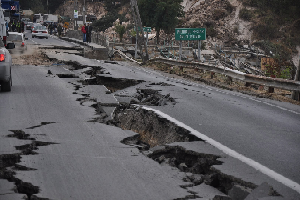The purpose of scientific essay example is to write a response with some evaluation on the chosen topic. The author must precisely unravel the theme in order to understand all its nuances. The response should contain careful critical analysis, the introduction to the topic, thorough discussion, and lead to the logical conclusion. Speaking about the structure, the preliminary part should include minimal necessary background, related to the topic, state argument or proposal, and provide the outline of the main research steps of the writer. The body section must contain several key elements like the clear development of the subject, description of relevant information in order to support the thesis. In addition, the writer is able to use certain tables and charts with appropriate references. Finally, the conclusion should include the short restatement of the purpose of the essay, summary text of the principal points within the body, and contain distinctive reasons for conclusion.
 The purpose of the paper is to evaluate the description and general information about the earthquakes in the USA. It is necessary to provide some statistics about the annual harmful effects of the earthquakes and ensure evaluation of the further tendency that this natural occurrence could display on the population and natural environment in America. Annually, earthquakes destroy thousands of houses and claim many human lives. However, this seismological phenomenon appears to be not as plain as some people suggest. There are various reasons why earthquakes regularly appear only on specific territories. Still, further researches pose new questions to puzzle known specialists. The main evaluation will result in reviewing the latest information about earthquakes.
The purpose of the paper is to evaluate the description and general information about the earthquakes in the USA. It is necessary to provide some statistics about the annual harmful effects of the earthquakes and ensure evaluation of the further tendency that this natural occurrence could display on the population and natural environment in America. Annually, earthquakes destroy thousands of houses and claim many human lives. However, this seismological phenomenon appears to be not as plain as some people suggest. There are various reasons why earthquakes regularly appear only on specific territories. Still, further researches pose new questions to puzzle known specialists. The main evaluation will result in reviewing the latest information about earthquakes.
It is not definitely understood how earthquakes are formed and how they end the existence cycle. However, recent studies are focused on solving the mystery of earthquakes in order to improve the aiming systems which could notify people about incoming calamity. Earthquake is represented by the collision of the two blocks of the earth which instantly slip one past another. Average earthquake lasts approximately from a few minutes to the several hours. The location where the earthquake starts is called hypocenter and the layer of the earth above it is the epicenter which affects the upper fault plane. Furthermore, earthquakes are often supplemented by the smaller strokes which are called foreshocks and they appear at the same place as the major earthquake.
The earth geological structure consists of the four major layers: the inner core, mantle, crust, and outer core. The reason for the majority of earthquakes is covered within the crust, the thin layer of the upper geological layer which is alike to the skin. In fact, we inhabit the surface of the crust. However, the crust is not unified and includes so-called tectonic plates which are movable. Actually, they drift on the down layers of the earth and often collide with each other. Furthermore, the edges of the plates are not definite in the outline and they are quite rough. Thus, when the edges collide, earthquakes occur within the area of collision. In the USA, the most active seismological zone is situated on the West Coast. It includes states like California and San Francisco.
To sum up, current research cannot evaluate definitely the phenomenon of the earthquake precisely. However, lead scientists constantly improve the matter of evaluation towards earthquakes, using various scientific methods and cutting edge scientific development. Apparently, the key to answering why earthquakes exactly appear in all cases is going to be revealed in the next decades owing to the increased interest towards the problem. Overall, investigation of the problem is the best way to find the solutions for resolving it.
Reference
- By Looking at the Amount of Time. “The Science of Earthquakes.” The Science of Earthquakes. N.p., n.d. Web. 14 Sept. 2016.
- “Earthquakes Can Trigger Near-instantaneous Aftershocks on Different Faults.”ScienceDaily. ScienceDaily, n.d. Web. 14 Sept. 2016.
- By David K. Lynch, PhD, Author of SanAndreasFault.org. “The San Andreas Fault.” San Andreas Fault Line. N.p., n.d. Web. 14 Sept. 2016.
- “Japan Earthquake Shifts Earth’s Mass and Moves Its Axis.” 2011 Japan 9.0 Earthquake Shifts Earth’s Mass and Moves Axis. N.p., n.d. Web. 14 Sept. 2016.
- “High Tides Raise Odds of Powerful Earthquakes.” LiveScience. TechMedia Network, n.d. Web. 14 Sept. 2016.